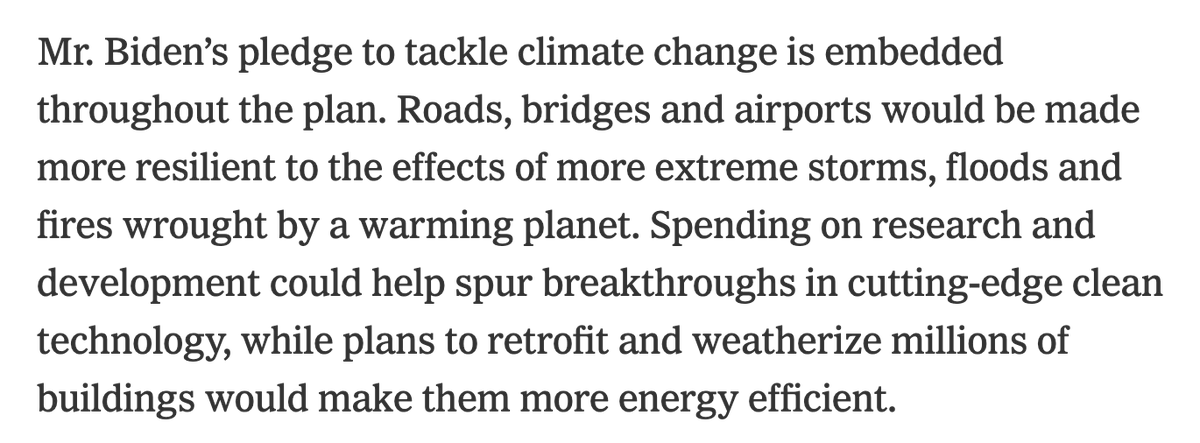
🧵New paper in @NatureEnergyJnl evaluating long-duration energy storage technologies.
Innovative, low-cost storage could make a decarbonized electricity system more affordable and reliable, and partially substitute for clean firm generation.
Summary: bit.ly/LDES_summary
Innovative, low-cost storage could make a decarbonized electricity system more affordable and reliable, and partially substitute for clean firm generation.
Summary: bit.ly/LDES_summary

The full paper, led by @nsepulvedam with myself, @dhariksm, Aurora Edington and Richard Lester (old @mitenergy friends!) is at @NatureEnergyJnl here: doi.org/10.1038/s41560…
You can read a copy for a limited time at rdcu.be/chG2k
You can read a copy for a limited time at rdcu.be/chG2k
@MITNews summarizes the new study here: energy.mit.edu/news/powering-…
And I'll do the same with the rest of this thread...
And I'll do the same with the rest of this thread...
The key findings in a 🥜:
-Cheap LDES can save as much as 15%-40% of total costs in a carbon-free grid
-Energy capacity cost & discharge efficiency most important
-Duration of >100 hrs needed for high system value
-LDES likely to be partial substitute for clean firm resources
-Cheap LDES can save as much as 15%-40% of total costs in a carbon-free grid
-Energy capacity cost & discharge efficiency most important
-Duration of >100 hrs needed for high system value
-LDES likely to be partial substitute for clean firm resources

Now to unpack a bit (you can access 1-page summary here: bit.ly/LDES_summary)
We used a detailed long-run electricity system planning model and extensive parametric analysis to identify and evaluate cost and performance targets for a wide range of emerging LDES technologies.
We used a detailed long-run electricity system planning model and extensive parametric analysis to identify and evaluate cost and performance targets for a wide range of emerging LDES technologies.

What we found:
1. LDES can deliver significant value. Assuming most favorable combos of potential future costs & efficiencies, LDES could potentially lower cost of electricity in a carbon-free grid by as much as 15-40%. Savings vary depending on cost, context & competing tech.
1. LDES can deliver significant value. Assuming most favorable combos of potential future costs & efficiencies, LDES could potentially lower cost of electricity in a carbon-free grid by as much as 15-40%. Savings vary depending on cost, context & competing tech.

2. Long duration storage needs to be cheap. At energy capacity cost of <=$50/kWh, LDES would see initial deployment and would reduce required firm generation capacity by 5-10%. Many developers are targeting lower energy capacity costs (e.g. ARPA-E DAYS focuse on $5-20/kWh range). 

3. LDES is likely to be a partial substitute for clean firm generation. Given today’s electricity demand patterns, displacing all firm power with LDES requires energy storage capacity cost of <$1/kWh, + very low power capacity costs (<$300/kW) + round-trip efficiency >60%. 

3b. Electrification of other energy uses makes it more difficult for LDES to substitute firm generation capacity. It will be more challenging to displace clean firm generation in Northern latitudes if electricity demand patterns shift due to electrification of heat and transport. 

4. Energy capacity cost and discharge efficiency are the most important factors to make long-duration energy storage competitive. Charge and discharge power capacity costs and charge efficiency of secondary importance. 



5. How long is long duration? The ability to sustain discharge for 100+ hours (4+ days) is required for LDES to deliver the largest electricity cost reductions & maximize substitutability for firm generation. The duration was less than 650 hours (27 days) for all cases considered 

What did we do for this study? We explored five generic design parameters that collectively can describe pretty much any possible long-duration storage technology, from pumped hydro and flow batteries to thermal storage and electrolytic hydrogen. 

The five parameters, which define the technology "design space" for possible long-duration energy storage technologies are:
1) energy storage capacity cost
2) charge power capacity cost
3) discharge power capacity cost
4) charge efficiency; and
5) discharge efficiency
1) energy storage capacity cost
2) charge power capacity cost
3) discharge power capacity cost
4) charge efficiency; and
5) discharge efficiency
A specific combination of values for these five parameters forms a technology ‘case’ that is available for deployment in a detailed capacity expansion model (GenX) that combines investment + production cost optimization with hourly operational constraints and full year resolution
We explore 1,280 distinct technology cases spanning a wide range of possible design parameters – the “technology design space” – and compare the system outcomes for these cases to the case with no LDES (think of control versus treatment effect).
We also model 14 different power system scenarios (think of 14 control groups) describing different geographies, electricity demand patterns, availabilities of variable renewable resources, and costs for a total of around 18,000 total cases.
(Burned a lot of CPU time for this!)
(Burned a lot of CPU time for this!)
This study is an example of one of 3 core research areas in my ZERO Lab: using macro-energy systems models to evaluate & optimize emerging low-carbon energy technologies, identify key cost and performance improvements, and provide insights to inform and target innovation.
This study shows how relatively inexpensive + fast computational modeling w/long-run macro-energy system planning models can identify high priorities for innovation -- what cost or performance gains really matter -- & focus efforts in a narrower range of the possible design space 

This kind of work can help identify the most promising novel energy technologies, focus research and engineering effort, and -- hopefully -- accelerate innovation for high-impact, low-carbon technologies. Or at least that's our hope and motivation!
Ongoing work at ZERO Lab includes:
-Flexible geothermal with in-reservoir energy storage w/@fervoenergy
-Design of flexible carbon capture to integrate in systems w/high shares of wind & solar w/@ARPAE
-Evaluation of potential fusion power plants w/@PPPLab
Lots of fun stuff!
-Flexible geothermal with in-reservoir energy storage w/@fervoenergy
-Design of flexible carbon capture to integrate in systems w/high shares of wind & solar w/@ARPAE
-Evaluation of potential fusion power plants w/@PPPLab
Lots of fun stuff!
Ok this thread is definitely long enough! Going to cut it off here.
Read the full paper: rdcu.be/chG2k
Share the 1-page summary: bit.ly/LDES_summary
Contact me via DM for PDF and SI (all 83 pages of it! If you're a LDES tech company, you'll want to dive right in)
Read the full paper: rdcu.be/chG2k
Share the 1-page summary: bit.ly/LDES_summary
Contact me via DM for PDF and SI (all 83 pages of it! If you're a LDES tech company, you'll want to dive right in)
• • •
Missing some Tweet in this thread? You can try to
force a refresh






